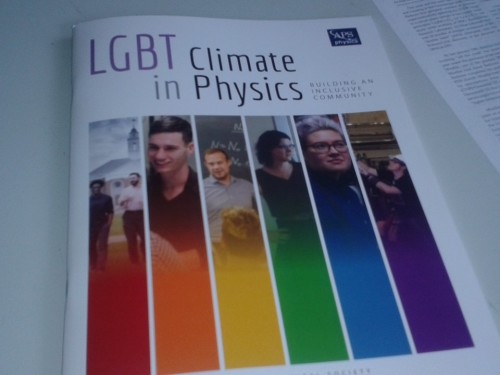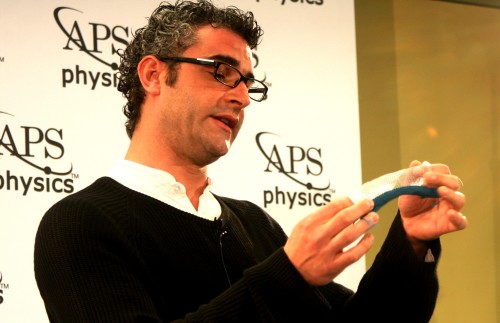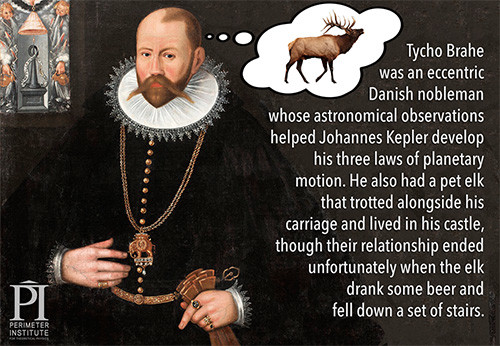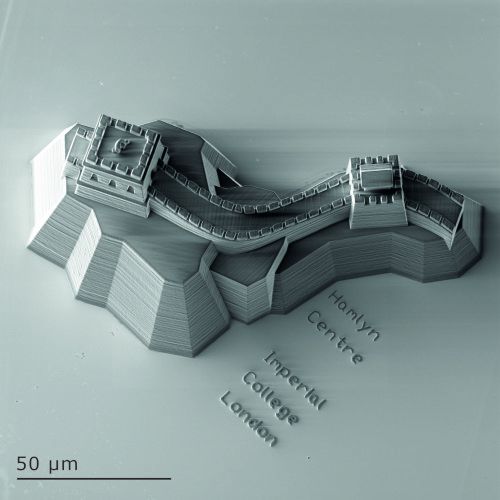Tag archives: science and society
APS launches LGBT Climate in Physics report

Lifting the lid: the LGBT Climate in Physics report launched at the APS March meeting.
By Matin Durrani in Baltimore, Maryland, US
I’ve been thinking a lot recently about the make-up of the physics community, particularly as this month saw Physics World publish a special issue, “Physics for all: building a more inclusive discipline”, that examined ways to make physics as welcoming as possible for everyone. It looked, for example, at “microaggressions” in physics, the role of unconscious bias and whether physics is just for people from better socioeconomic backgrounds.
One article that attracted particular attention – based on informal feedback and e-mails I’ve received since the issue came out – was “Where people and particles collide”. Written by my Physics World colleague Louise Mayor, it looks at what life’s like for gender and sexual minorities at the CERN particle-physics lab in Geneva and the challenges people there faced in setting up an official LGBT Cern Club. (There is still no such club, but CERN has set up an LGBT “informal network”.)
The issues facing gender and sexual minorities have also been a theme here at the APS March meeting, with the launch this morning of a new APS report LGBT Climate in Physics. The report is based on focus groups, a “climate survey” of more than 320 members of the US LGBT physics community, and follow-up interviews with five survey participants. A further 2596 members of the entire APS community replied to a separate survey, of whom 2.5% identified themselves as LGBT.
View all posts by this author | View this author's profile
The everyday physics of knitting, ribbon-curling and more

Knit stitch: Frédéric Lechenault talks about the physics of knitted materials. (Courtesy: James Riordon/APS)
By Tushna Commissariat in Baltimore, Maryland, US
You may think that a simple occurrence such as a tree shedding its leaves or an everyday activity such as knitting or ribbon-curling does not involve a great deal of physics, but you would be wrong. In a press session here at the APS March meeting entitled “The physics of everyday life”, three different groups of researches talked about the unexpectedly complex physical principles that govern all of the above mentioned instances.
Sunny Jung of the Bio-Inspired Fluid Lab at Virginia Tech in the US studies the shapes of different leaves and the thickness of their “petioles” or stalks – both of which determine the stresses a leaf can withstand on a windy day and what happens when it ultimately falls. Jung’s team studies this because leaves are actually very good at withstanding all kinds of stress and strain without buckling – something that could be applied to large man-made industrial objects such as suspended road-signs.
The researchers found that slender leaves are more likely to bend under high winds, whereas a flat leaf is more likely to twist at the stem before falling. They also discovered that the length of the stalk is determined by the size of the leaf, with larger leaves needing longer stems so that sunlight can cover more of their surface area.
Baltimore braces itself for physics

March madness: the APS March meeting at the Baltimore Convention Center (top) and the IOP Publishing stand at the exhibition. (Courtesy: Tushna Commissariat)
By Matin Durrani and Tushna Commissariat in Baltimore, Maryland, US
So here we are in Baltimore to attend the 2016 March meeting of the American Physical Society (APS). We’re writing this at the window seats in a burrito bar on Pratt Street while staring at the hulk that is the Baltimore Convention Center, where nigh-on 10,000 physicists will be congregating all week.
We’ve been playing a game of “spot the APS attendee” while tucking into our burritos. Without wishing to stereotype physicists (okay, go on then, we will) they’re the ones with the backpacks stuffed with poster tubes, pulling little trolley suitcases, looking lost before veering towards the convention centre.
There are also some physicists inside Chipotle Mexican Grill – you can tell because they’re huddled around laptops looking at PowerPoint presentations showing graphs of Fermi surfaces and topological insultators. Probably not the usual subject of discussion in here.
Scientists battle celebrities, a quantum ‘unconference’ and space travel, past and future
By Tushna Commissariat
Its been a strange week for scientists and celebrities popping up together on the world stage – what with rapper B.o.B and Neil deGrasse Tyson’s very public face-off about the former’s conspiracy theory claims of the Earth being flat – but it didn’t end there. In a celebrity trio that is even more surprising, physicist Stephen Hawking has come together with Hollywood actor Paul Rudd, (most recently starring in the film Ant-Man) in a video narrated by Keanu Reeves. Earlier this week, Caltech’s Institute for Quantum Information and Matter hosted the event One Entangled Evening: a Celebration of Richard Feynman’s Legacy. As a promo of sorts for the event – which had special appearances by Rudd, Reeves, Hawking, Bill Gates and even Yuri Milner, apart from actual quantum physicists such as John Preskill and Dave Wineland – they filmed the above video with Rudd and Hawking battling each other at a game of quantum chess. You will have to watch the video to see who wins.
View all posts by this author | View this author's profile
Physicists’ pets, seven stars for Bowie, ping-pong in space and more

Prancer and the astronomer: Brahe and his pet elk. (Courtesy: Perimeter Institute)
By Tushna Commissariat
Sparks of inspiration come from many sources, but for some of the 20th century’s most well known scientists, their four-legged pets played a key role. From Tesla’s cat “Macak” – his interest in electricity was lit as a child when he noticed sparks generated while he stroked Macak – to Schrödinger’s (real live) dog “Burshie”, these intellectual giants sought the company of pets just as we do and over at the Perimeter Institute’s website, you can learn all about “Great physicists and the pets who inspired them”. My favourite “pet” is of course Tycho Brahe’s infamous elk (you can read about it in the image above). With all of these pets about, its a miracle that a paper wasn’t eaten by a naughty dog or cat!
The life and times of Einstein – ‘A vagabond and a wanderer’

Falling in: Sir Roger Penrose’s sketch of a black-hole collapse. (Courtesy: Tushna Commissariat)
By Tushna Commissariat
So much has been said about Einstein and his general theory of relativity (GR) that one would assume there isn’t two entire days worth of talks and lectures that could shed new light on both the man and his work. But that is precisely what happened last weekend at Queen Mary University London’s “Einstein’s Legacy: Celebrating 100 years of General Relativity” conference, where a mix of scientists, writers and journalists talked about everything from the “physiology of GR” to light cones and black holes, to M-theory and even GR’s “sociological spin-offs”.
The opening talk, “Not so sudden genius”, was given by journalist and author of “Einstein: A hundred years of relativity“, Andrew Robinson. The talk was very fascinating and early on Robinson outlined that Einstein stood on the shoulders of many scientists and not just “giants” such as Newton and Mach. But he also acknowledged that the scientist was always a bit of a loner and he preferred it this way. Robinson rightly pointed out that until 1907, Einstein was “working in brilliant obscurity” and later, even once fame found him, rootlessness really suited Einstein’s personality – he described himself as “a vagabond and a wanderer”.
Tiny gifts for world leaders, Hubble’s birthday and more

Tiny trophy: The Great Wall of China, printed with a Nanoscribe system at the Hamlyn Centre, Imperial College London. (Courtesy: Nanoscribe)
By Hamish Johnston and Tushna Commissariat
Last month, China’s president Xi Jinping’s was on a state visit in the UK and while here, he toured a few academic institutions, including the UK’s new National Graphene Institute (NGI) in Manchester and Imperial College London. As we reported in an earlier blog, Nobel-prize-winning Manchester physicist Kostya Novoselov presented President Xi “with a gift of traditional Chinese-style artwork, which Kostya himself had painted using graphene paint”. This week we found out that the Imperial scientists also presented him with a “tiny gift” in the form of a 50 µm scale version of a section of the Great Wall of China, imaged above, created with a Nanoscribe 3D printer. Prince Andrew, who was also on the visit, was given an image of a panda leaping over a bamboo cane, which was printed on the tip of a needle.
X-ray visions of the past, undead physics, stargazing cruises and more
By Tushna Commissariat
Peering into a small 17th century metallic box, without damaging its contents, is no mean feat. But thanks to the use of synchrotron radiation, scientists at the European Synchrotron Radiation Facility (ESRF) in Grenoble were able to “see” inside one, using a technique known as synchrotron X-ray phase contrast micro-tomography. They were also able to create a 3D reconstruction of clay medals concealed within the very fragile and badly oxidized box, which was discovered on the archaeological site of the Saint-Laurent church, and is now at the archaeological museum of Grenoble (MAG). Take a look at the video above to see what the box held. You can also learn more about the researcher’s tomography technique in an article of ours.
Tomorrow is Halloween, so we hope you have your physics-themed pumpkins carved and out on your doorsteps. For some spooky reading this week, take a look at Davide Castelvecchi‘s “Zombie physics: 6 baffling results that just won’t die” story over on the Nature News website. In it, he lists six “undead” results – things that physicists just can’t seem to prove or disprove – including long-running disagreements over certain dark-matter results, hemispheric inconsistencies and spinning protons. Let us know what you think are some of the most undead physics results that should be laid to rest, in the comments below. And while you are at it, make sure to look at today’s creepy edition of Fermilab Today to read about the rise of the zombie accelerator and the “The cult of the Tev.”
Quantifying the success of public engagement

Measuring up – how does one evaluate the success of outreach projects such as the dance Constant Speed? (Courtesy: Anthony Crickway)
By Matin Durrani
Here in the Physics World office our attention was caught last week by a story in the Times Higher Education. It reported on a lecture given by Simon Singh at the 2:AM conference in Amsterdam, in which the broadcaster, author and former particle physicist criticized some projects that are designed to boost the public’s interest in science, but which, he feels, are not value for money.
The story mentioned several projects facing Singh’s ire, one of which was the 2005 dance Constant Speed that was created to mark the centenary of Einstein’s annus mirabilis. It was commissioned by the Institute of Physics, which publishes Physics World, so naturally Singh’s comments piqued my interest.
